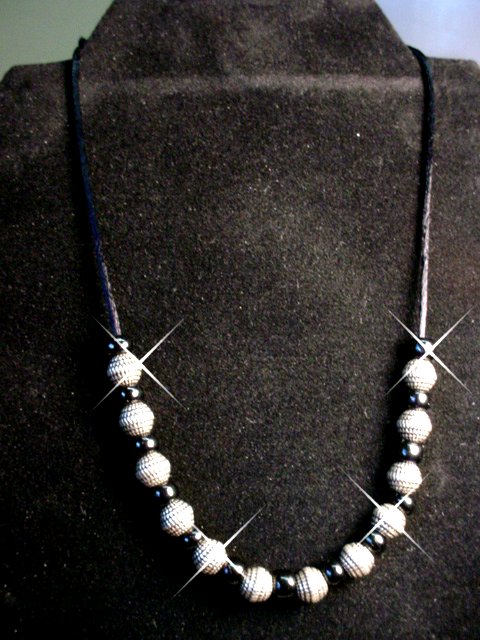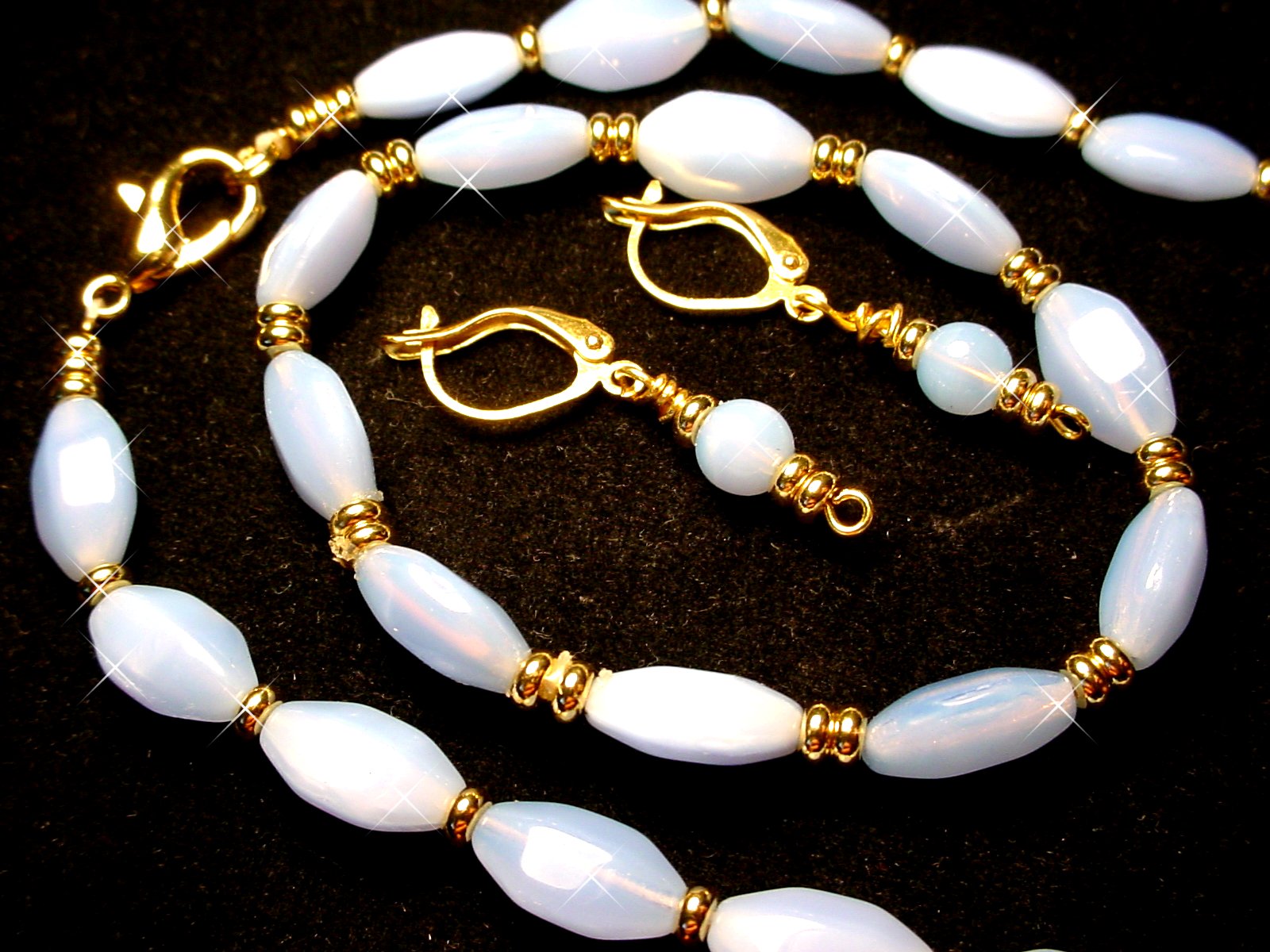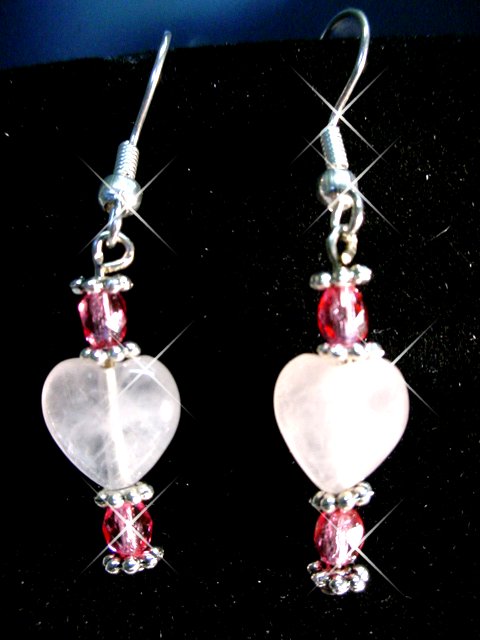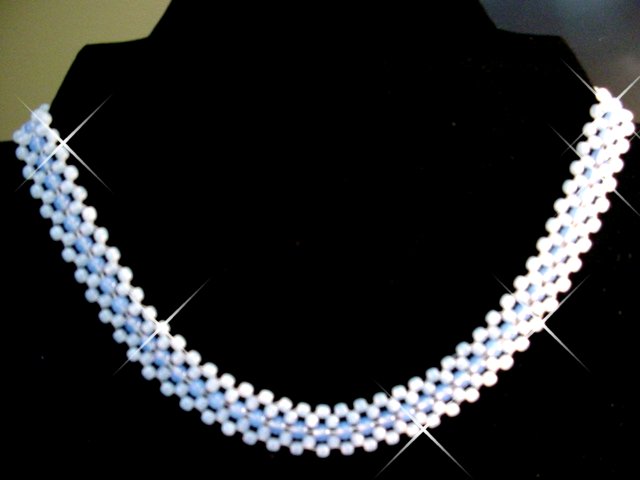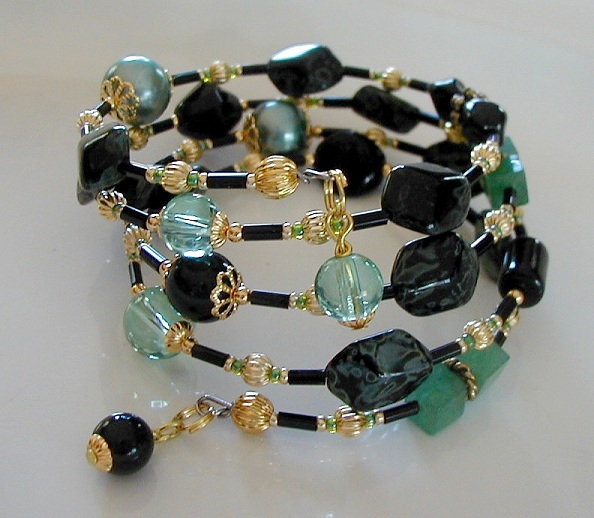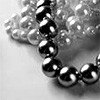

Bead Guide
|
|
|
|
|
|
|
|
|
|
Beads have been around from over 40,000 yrs ago. They have been made
from many different substances including gemstones glass, bone, horn,
clay, paper, metals, shells, porcelain, wood, and ivory. The beads
have always been made for adornment, status indicators, or religious
purposes. In some places, beads used to play the role of money.
The charm of beaded jewelry lies in its intricacy, beautiful colors,
different shapes, sizes and design.
What are Findings?
All types of fasteners, and construction components used in jewelry making. Examples are crimps, clasps, bails, bead caps, jump rings, headpins, spacers and more.
What is a Jump Ring?
A small wire ring, not soldered shut, used to link elements of jewelry.
What is a crimp?
Small, soft metal beads that are squeezed shut to secure loops of threading material fasteners onto clasps.
What is Millefiori?
Means "thousand flowers" in Italian. A method of creating glass or clay beads with intricate patterns using canes.
What is Abalone?
A deposit made from inside a seashell, also called mother-of-pearl.
What metal do I use?
Customers wonder if they should invest in expensive sterling or gold findings. It depends on the use and on your taste. For bracelet clasps, nickel plated or gold plated base metal are stronger, last longer. Sterling silver is not really robust enough unless you use really solid pieces. Sterling tarnishes, and gold sometimes turns skin black. We prefer the base metal findings for many applications. However we do like the look of a sterling or carat gold clasp for a necklace or bracelet that has precious or semiprecious stones or beads, or special unusual beads.
- January - Garnet
- February - Amethyst
- March - Aquamarine
- April - Diamond
- May - Emerald
- June - Pearl or Moonstone
- July - Ruby
- August - Peridot
- September - Sapphire
- October - Opal
- November - Citrine or Topaz
- December - Turquoise or Zircon
|
|
||||||||||||||||||||||||||||||||||||||||||||||||||||||||||||||||||||||||||||||||||||||||||||||||||||||||
|
||||||||||||||||||||||||||||||||||||||||||||||||||||||||||||||||||||||||||||||||||||||||||||||||||||||||
|
||||||||||||||||||||||||||||||||||||||||||||||||||||||||||||||||||||||||||||||||||||||||||||||||||||||||
|
|
||||||||||||||||||||||||
|
||||||||||||||||||||||||
Linking beads is easy!
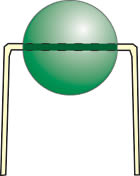
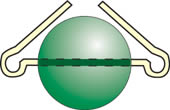

Glass Surfaces & Finishes
| Opaque | Light can not pass through it. |
| Transparent | Light can pass through it. Often referred to as "glass". |
| Translucent | Allows partial transmission of light through it. |
| Matte | Dull appearance, Achieved by tumbling beads or dipping in a glass etching solution. |
| Silver Lined | Have a mirror like finish inside the bead. Which adds sparkle to the bead. |
| Color Lined | Usually seen in a two color mix with an opaque color inside of a transparent bead. |
| Luster | A very shinny finish covering the entire outer layer of the bead. |
| Ceylon | Translucent bead with a luster finish |
| Dyed | A process of surface color dying often seen in Japanese beads. Color will come off if you do not protect them. Clear spray paint may be used. |
| Metallic | Bead surface has a fired on metal like finish. Which adds shine to the bead |
| AB (Aurora Borealis) | A rainbow like surface which has been fired onto the bead. |
